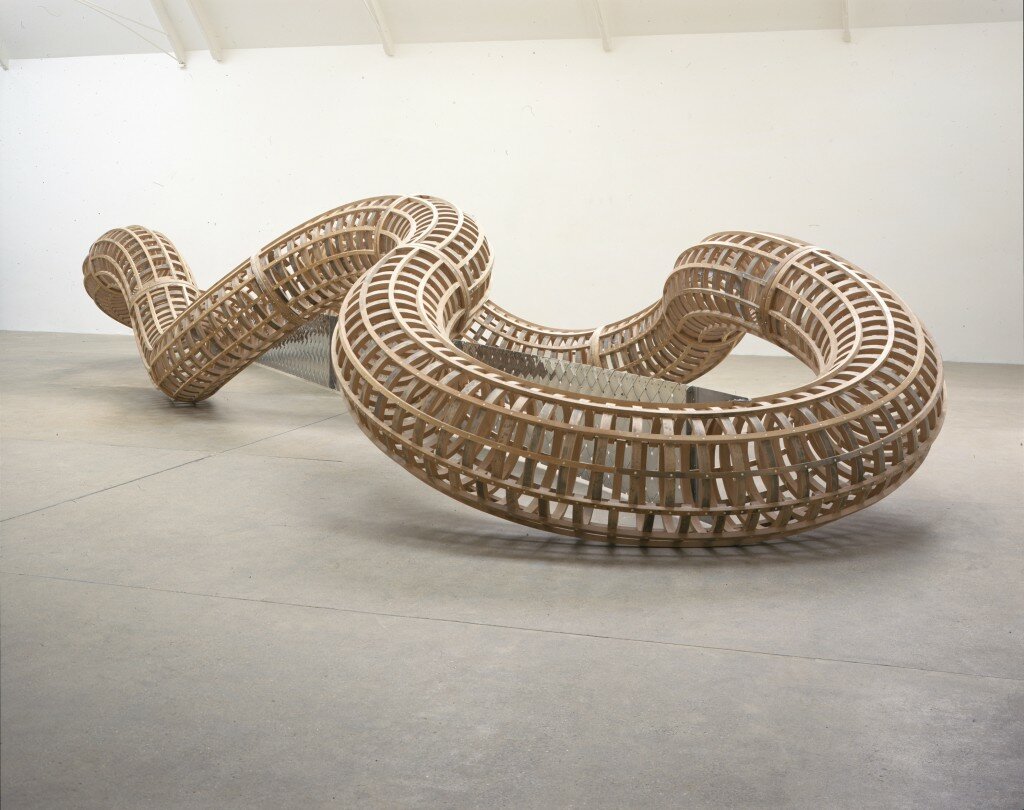 |
| Restless, 2005 |
Richard Deacon / Tate Britain, London / 5 February – 27 April 2014.
La Tate Britain présente une exposition majeure de Richard Deacon, sculpteur britannique de premier plan, mieux connu pour ses grandes formes ouvertes et lyriques.
 |
| Blind, Deaf And Dumb A 1985 |
Depuis plus de quatre décennies, Richard Deacon a employé des matériaux allant du bois et du polycarbonate feuilleté de cuir ou de tissu ou encore de l’argile, dont nombre d’exemples ponctuent l’exposition. Deacon fonctionne sur les deux échelles, combinant des formes organiques avec des éléments de l’ingénierie. Ses méthodes de construction, qui changent constamment, sont le résultat de l’évolution de son approche sculpturale, réfléchis par son utilisation de bois courbé sinueux, d’acier tordu et de céramique vitrifiée.
.jpg) |
| Out of order, 2003 |
 Cette exposition à la Tate Britain souligne l’intérêt de Deacon pour les matériaux et leur manipulation, comme dans After (1998), un grand travail en bois dont le volume constitue un espace en continu et en boucle.
Cette exposition à la Tate Britain souligne l’intérêt de Deacon pour les matériaux et leur manipulation, comme dans After (1998), un grand travail en bois dont le volume constitue un espace en continu et en boucle.
 Sont également montrés les travaux à petite échelle, mais on notera en particulier les premiers dessins de Deacon, comme "Orphée", une suite de dessins construit à partir des courbes complexes qui ont beaucoup influencé les formes organiques de sa sculpture ultérieure, notamment la grande sculpture en céramique verte Fold (2012) .
Sont également montrés les travaux à petite échelle, mais on notera en particulier les premiers dessins de Deacon, comme "Orphée", une suite de dessins construit à partir des courbes complexes qui ont beaucoup influencé les formes organiques de sa sculpture ultérieure, notamment la grande sculpture en céramique verte Fold (2012) .
 |
| This, That And The Other, 1985 |


Aucun commentaire:
Enregistrer un commentaire